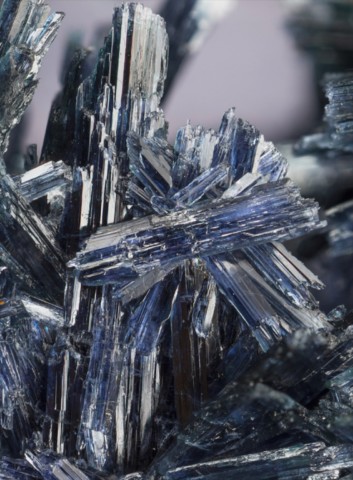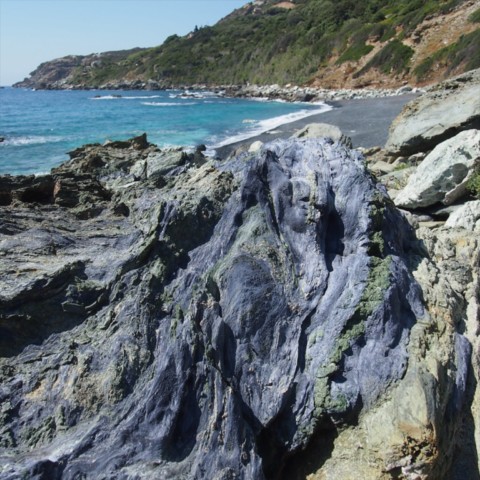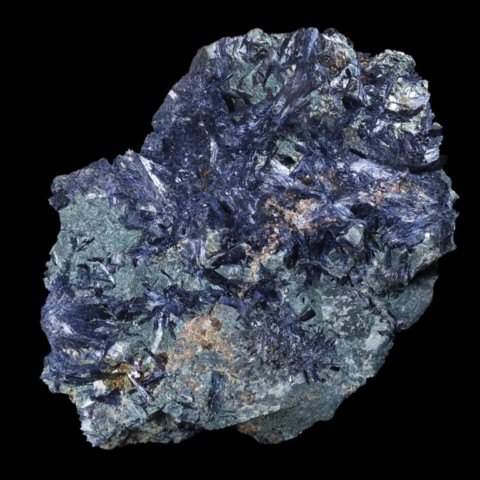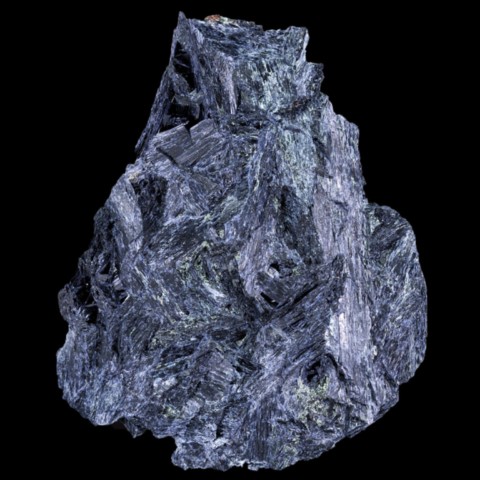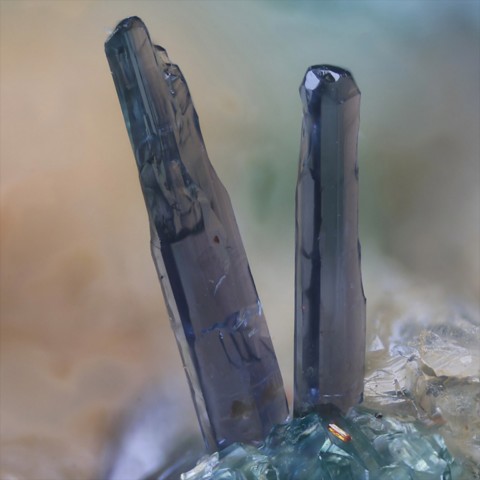 Glaucophane - Encyclopedia
Glaucophane - Encyclopedia
Class : Silicates
Subclass : Inosilicates
Crystal system : Monoclinic
Chemistry : Na2Mg3Al2Si8O22(OH)2
Rarity : Quite common
Glaucophane belongs to the group of sodium amphiboles and forms a series with ferroglaucophane. It is essentially a mineral from rocks of regional metamorphism of low temperature and high pressure (blue schist facies, the blue tint being precisely linked to the presence of this mineral). It is associated with epidote, lawsonite, almandine and muscovite. It is also present as relics in retromorphosed eclogites. Its name comes from the Greek glaukos (green-blue) and phainein (to appear) because of its color. Glaucophane occurs in often indistinct crystals, sometimes in elongated prisms with rounded terminal faces, but more often in lamellar, fibrous, granular or bacillary masses of a lavender gray-blue to dark blue and blue-black color.
Main photo : Glaucophane from Rio Oremo, Piedmont, Italy © Tony Peterson
Glaucophane in the World
Twinning
Twins are single or multiple and parallel to {100}.
Fakes and treatments
No fakes recorded for this mineral species.
Hardness : 5 to 6
Density : 3.08 to 3.22
Fracture : Irregular to conchoidal
Streak : Gray to gray-blue
TP : Translucent
RI : 1.606 to 1.655
Birefringence : 0.021
Optical character : Biaxial -
Pleochroism : Strong
Fluorescence : None
Solubility : Insoluble
Magnetism : Paramagnetic
Radioactivity : None

